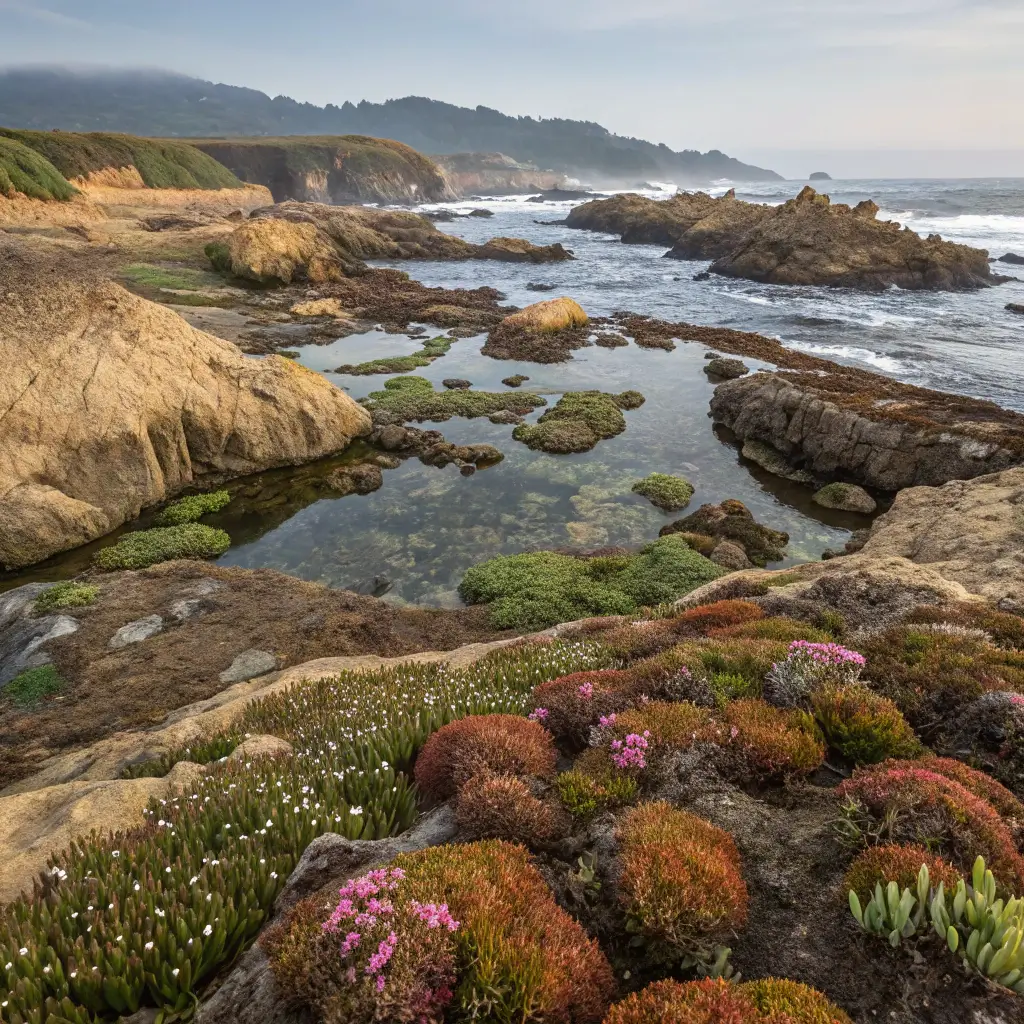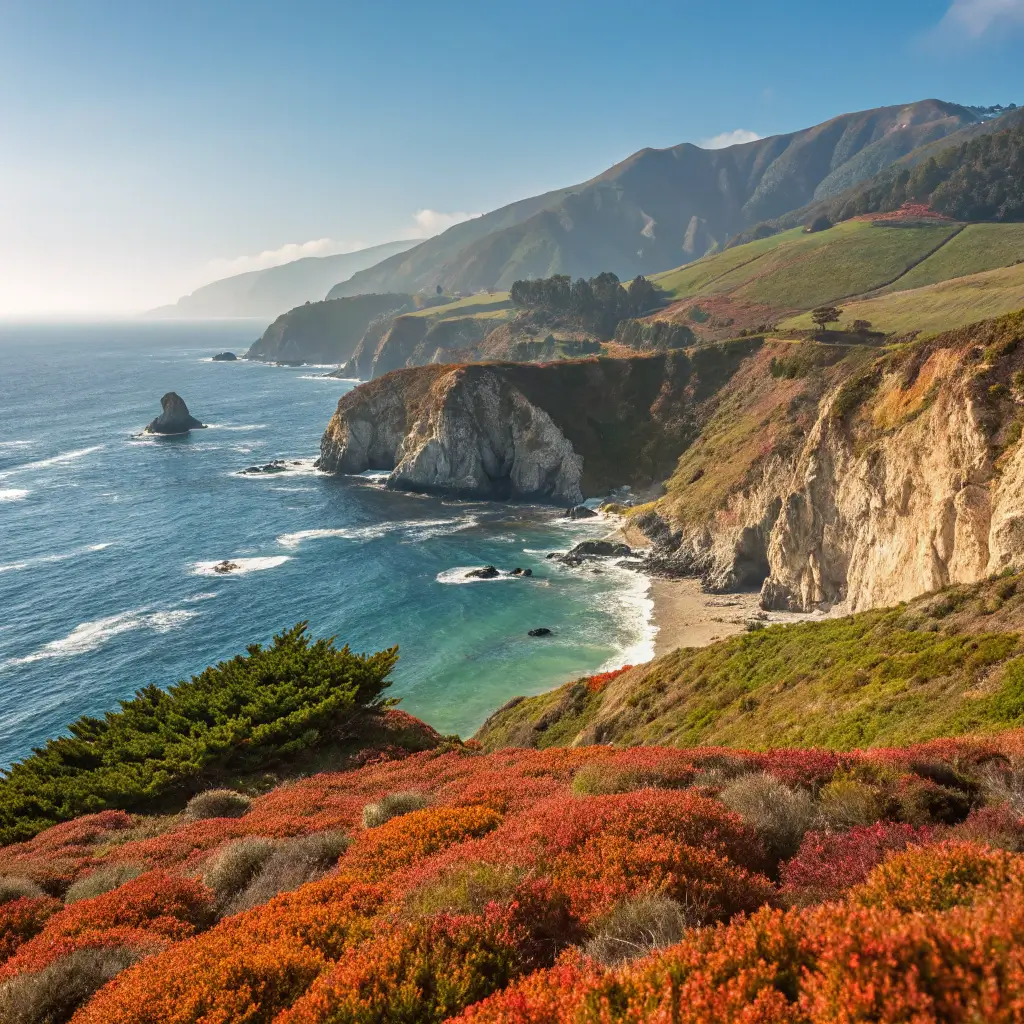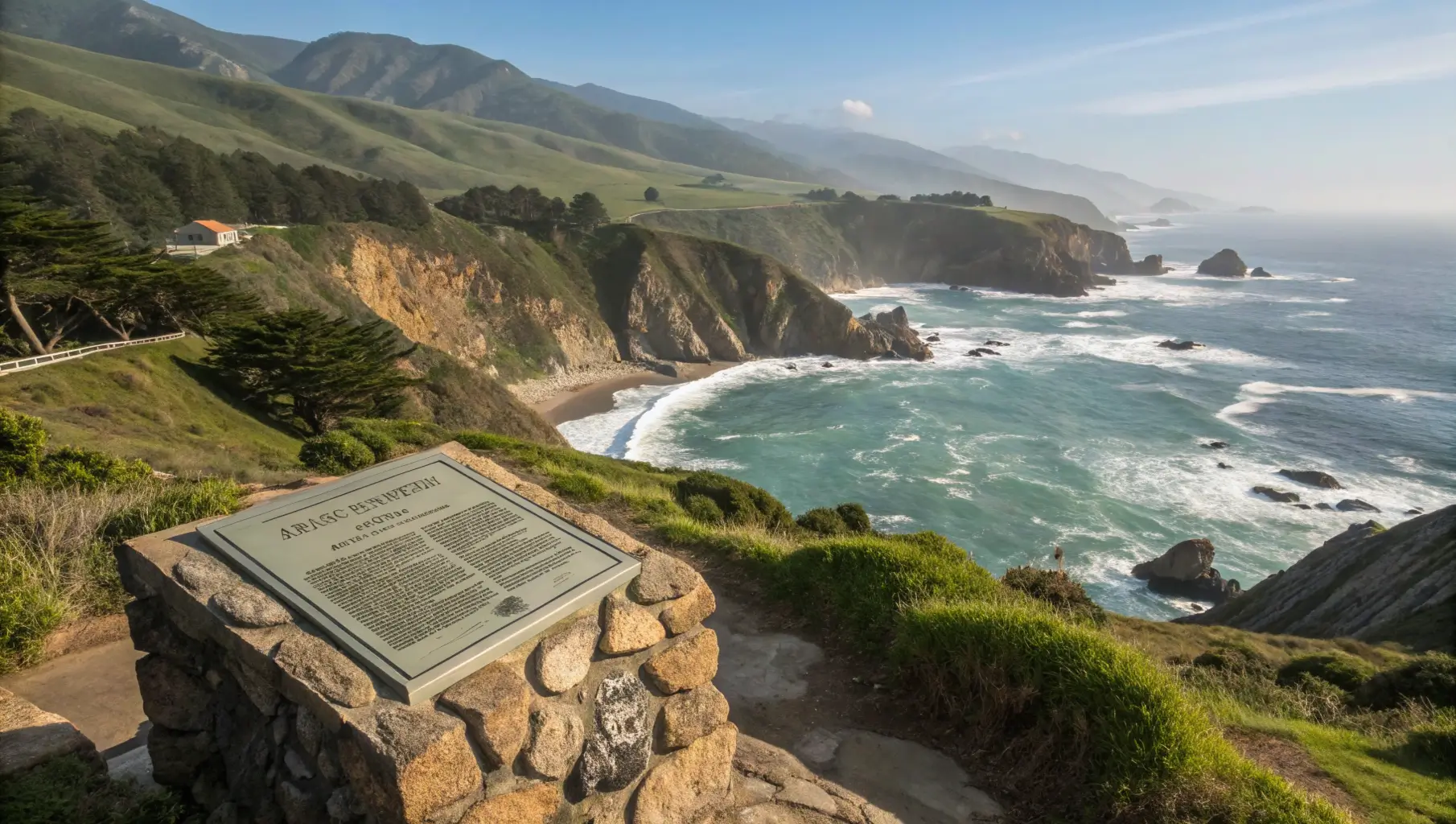The California Coastal National Monument is a stunning expanse of protected coastal land that stretches along the Pacific Ocean. It encompasses over 20,000 offshore rocks, islands, and coastal habitats. This monument plays a crucial role in preserving California’s natural beauty and biodiversity. Established in 2000, it aims to protect the unique coastal ecosystems and wildlife that thrive in this region. The monument is a testament to the importance of coastal conservation and the need to safeguard these vital habitats for future generations.
The history of the California Coastal National Monument dates back to the late 19th century when conservation efforts began to gain momentum. The area was officially designated as a national monument by President Bill Clinton, highlighting its ecological and historical significance. This designation has allowed for the protection of various species and habitats, making it a vital area for both wildlife and outdoor activities in California.
Table of Contents
Geography and Natural Features
The California Coastal National Monument features a diverse coastal landscape characterized by rugged cliffs, sandy beaches, and rocky shorelines. The dramatic scenery is shaped by the powerful forces of the Pacific Ocean, creating unique geological formations that attract visitors and researchers alike.

Among the notable geological features are sea stacks, tide pools, and coastal bluffs. These formations not only provide breathtaking views but also serve as critical habitats for various marine and terrestrial species. The interplay of land and sea creates a dynamic environment that supports a rich array of biodiversity.
The biodiversity within the California Coastal National Monument is remarkable. It is home to numerous species of birds, marine mammals, and unique plant life. Coastal ecosystems, such as kelp forests and intertidal zones, thrive here, offering essential resources for wildlife. The monument serves as a sanctuary for California wildlife, including sea otters, harbor seals, and various seabird species.
Visitors can explore the diverse ecosystems through numerous California hiking trails that wind along the coast. These trails provide opportunities for outdoor activities in California, such as hiking, birdwatching, and photography. Each trail offers a unique perspective of the coastal landscape, allowing visitors to connect with nature and appreciate the monument’s beauty.
In addition to its natural features, the California Coastal National Monument holds historical significance. The area has been inhabited by Indigenous peoples for thousands of years, who have deep cultural ties to the land and its resources. Understanding this history enriches the visitor experience and highlights the importance of preserving these landscapes.
For those interested in giving back, there are various volunteer opportunities in California that focus on coastal conservation efforts. Engaging in these activities not only helps protect the environment but also fosters a sense of community and connection to the natural world.
Recreational Activities
The California Coastal National Monument offers a plethora of recreational activities for nature enthusiasts and adventure seekers alike. From hiking to wildlife viewing, there’s something for everyone.
Hiking and Trails
Explore diverse California hiking trails that wind through stunning coastal landscapes. Trails vary in difficulty, catering to both novice and experienced hikers. Popular trails include the Point Reyes National Seashore and the Big Sur Coast. Enjoy breathtaking views of the Pacific Ocean and unique geological formations.
Wildlife Viewing Opportunities
California wildlife thrives in this coastal haven. Spot sea lions, elephant seals, and various bird species. The best times for wildlife viewing are during migration seasons. Bring binoculars for an up-close experience. Guided tours are available for those seeking expert insights.
Camping and Outdoor Activities
Camping is a fantastic way to immerse yourself in California’s natural beauty. Designated campgrounds offer amenities while keeping you close to nature. Engage in outdoor activities California has to offer, such as kayaking, tide pooling, and photography. Remember to follow Leave No Trace principles to protect these pristine environments.
Conservation Efforts
Conservation is vital for preserving the unique ecosystems of the California Coastal National Monument. Protecting these areas ensures the survival of diverse species and habitats.
Importance of Conservation in the Area
Coastal conservation helps maintain biodiversity and protects fragile ecosystems. It also supports local economies through eco-tourism. Healthy coastal environments contribute to climate resilience.
Key Organizations Involved
Several organizations play a crucial role in conservation efforts. The Bureau of Land Management (BLM) oversees the monument. Nonprofits like the California Coastal Conservancy and the Nature Conservancy actively engage in restoration projects.
Recent Initiatives and Future Plans
Recent initiatives focus on habitat restoration and public education. Future plans include expanding protected areas and enhancing visitor facilities. Volunteer opportunities California offers allow individuals to contribute to these efforts. Engaging the community is essential for long-term success in conservation.
Visitor Information
The California Coastal National Monument is a breathtaking destination that offers unique experiences year-round. The best times to visit are during spring and fall when the weather is mild, and wildlife is abundant. Summer can be crowded, while winter offers solitude and dramatic coastal views.
Access points vary along the coast, with popular locations including Trinidad, Point Arena, and San Luis Obispo. Public transportation options are limited, so consider renting a car for flexibility. Many coastal parks provide parking facilities, making it easier to explore.
Safety is paramount when visiting. Always stay on marked trails to protect fragile coastal ecosystems. Be aware of tides and weather conditions, as they can change rapidly. Wildlife encounters are common, so maintain a respectful distance from animals. Familiarize yourself with local regulations regarding camping, fishing, and fire safety.
Cultural and Historical Significance
The California Coastal National Monument is rich in indigenous history and cultural heritage. Native American tribes, such as the Yurok and Chumash, have lived in harmony with these lands for thousands of years, utilizing coastal resources sustainably.
Historical landmarks include ancient shell middens and petroglyphs that tell the stories of the region’s first inhabitants. The area also features lighthouses and coastal forts that played significant roles in maritime history.
Visitors can explore these sites to gain a deeper understanding of California’s historical significance. Engaging with local tribes through cultural programs can enhance your experience and appreciation of the region’s heritage.
How to Get Involved
Getting involved with the California Coastal National Monument is a rewarding experience. Here are some ways you can contribute:
Volunteer Opportunities
Join local organizations focused on coastal conservation. Opportunities include beach clean-ups, habitat restoration, and wildlife monitoring. Check websites like the Bureau of Land Management for upcoming events.
Supporting Conservation Efforts
Donate to non-profits dedicated to preserving California’s coastal ecosystems. Your contributions help fund vital conservation projects and educational programs.
Educational Programs
Participate in workshops and guided tours to learn about California wildlife and coastal ecosystems. Many programs are designed for all ages, making them perfect for families.

Conclusion
The California Coastal National Monument is a treasure trove of natural beauty and historical significance. It plays a crucial role in protecting diverse coastal ecosystems and wildlife. We encourage everyone to visit, explore, and support conservation efforts. Your involvement can make a difference in preserving this unique landscape for future generations.
FAQs
What is the California Coastal National Monument?
The California Coastal National Monument is a protected area that encompasses over 20,000 small islands, rocks, and reefs along the California coastline, established to preserve its natural beauty and biodiversity.
How can I access the California Coastal National Monument?
Access varies by location; many areas can be reached via coastal highways, while some require hiking or boat access. Check local resources for specific access points.
What activities can I do at the monument?
Visitors can enjoy hiking, wildlife watching, photography, and exploring tide pools. Some areas also offer camping and educational programs.
Are there any fees to visit the California Coastal National Monument?
Most areas of the monument are free to visit, but some specific sites may have parking or access fees. Always check ahead for any potential costs.
How can I support conservation efforts at the monument?
You can support conservation by volunteering with local organizations, participating in clean-up events, and advocating for policies that protect the coastal environment.
Exploring the California Coastal National Monument
The California Coastal National Monument is a breathtaking stretch of protected coastal land that showcases the stunning natural beauty of California. Spanning over 1,100 miles of coastline, this monument is a treasure trove of coastal ecosystems, wildlife, and outdoor activities. Whether you’re a nature enthusiast, a history buff, or simply looking for a weekend getaway, this guide will help you navigate the wonders of the California Coastal National Monument.
What is the California Coastal National Monument?
Established in 2000, the California Coastal National Monument protects a series of islands, rocks, and reefs along the California coast. It plays a crucial role in coastal conservation, preserving habitats for diverse California wildlife, including sea lions, seabirds, and unique plant species.
Why Visit the California Coastal National Monument?
Visitors are drawn to the monument for its stunning vistas, rich biodiversity, and recreational opportunities. Here are some compelling reasons to explore:
Experience California’s natural beauty firsthand.
Engage in outdoor activities California offers, such as hiking, kayaking, and birdwatching.
Discover the historical significance California holds through its coastal heritage.
Participate in volunteer opportunities California provides to help preserve these natural spaces.
Outdoor Activities in the Monument
The California Coastal National Monument is a haven for outdoor enthusiasts. Here are some popular activities:
- Hiking along scenic California hiking trails that offer breathtaking ocean views.
- Kayaking in the calm waters around the coastal parks.
- Wildlife watching, especially during migration seasons.
- Photography opportunities at stunning viewpoints and unique geological formations.
Visitor Guide to the California Coastal National Monument
Planning your visit? Here are some tips:
- Check the weather before heading out to ensure a pleasant experience.
- Bring binoculars for wildlife viewing and photography.
- Pack a picnic to enjoy at one of the many scenic spots.
- Respect the natural environment by following Leave No Trace principles.
Conclusion
The California Coastal National Monument is a must-visit destination for anyone looking to immerse themselves in California’s coastal ecosystems. With its rich wildlife, outdoor activities, and historical significance, it offers something for everyone. Whether you’re hiking the trails or volunteering for conservation efforts, your experience here will be unforgettable.


